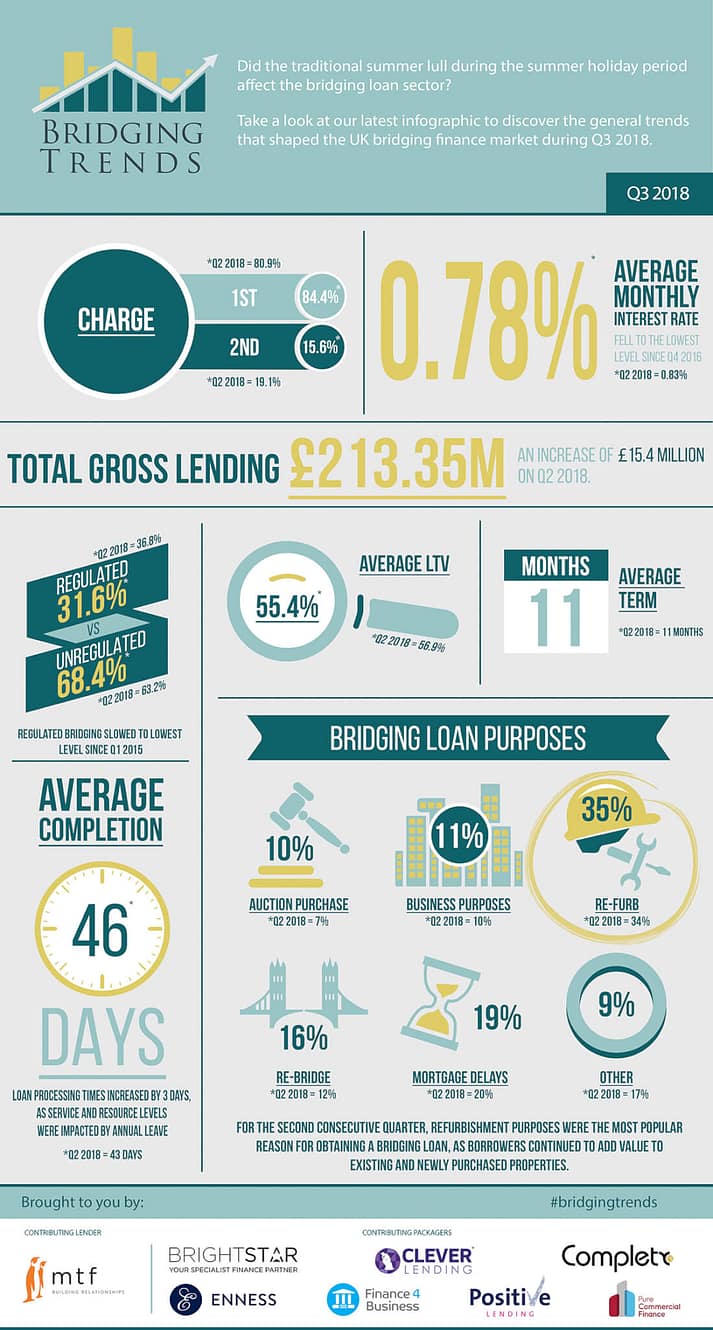Regulated bridging loans fell in the third quarter to the lowest level since Q1 2015, according to the latest Bridging Trends data.
The number of regulated loans conducted by Bridging Trends contributors fell for the second consecutive quarter, to 31.6% of all lending in Q3 2018, compared to 36.8% during Q2 2018.
This is the lowest level since Q1 2015, when the number of regulated bridging loans transacted was at 31.5% of all lending.
Bridging loan volume transacted by contributors hit £213.35 million in Q3 2018, an increase of £15.4 million in the previous quarter. This is the highest figure to date and comes as another new contributor joins Bridging Trends- specialist finance packager, Clever Lending.
First legal charge lending increased to 84.4% of all bridging loans during Q3 2018, up from 80.9% in the second quarter. Meanwhile, second charge loans decreased to 15.6% compared to 19.1% during Q2 2018.
For the second consecutive quarter, refurbishment purposes were the most popular reason for obtaining a bridging loan, as borrowers continued to add value to existing and newly purchased properties.
Mortgage delays were the second most popular reason for obtaining a bridging loan, accounting for 19% of all lending, down from 20% in the previous quarter. Whilst loans for auction purchases and business purposes increased in the third quarter by 3% and 1% respectively.
The average monthly interest rate dropped to 0.78% in Q3, from 0.83% in Q2 2018- the lowest rate recorded since Q4 2016. This activity translated into lower LTVs, with average LTV levels in Q3 decreasing by 1.5% to 55.4%.
The average completion time on a bridging loan application jumped to 46 days during the third quarter from 43 during the second quarter, as service and resource levels were impacted by annual leave.
The average term of a bridging loan in the third quarter remained at 11 months.

